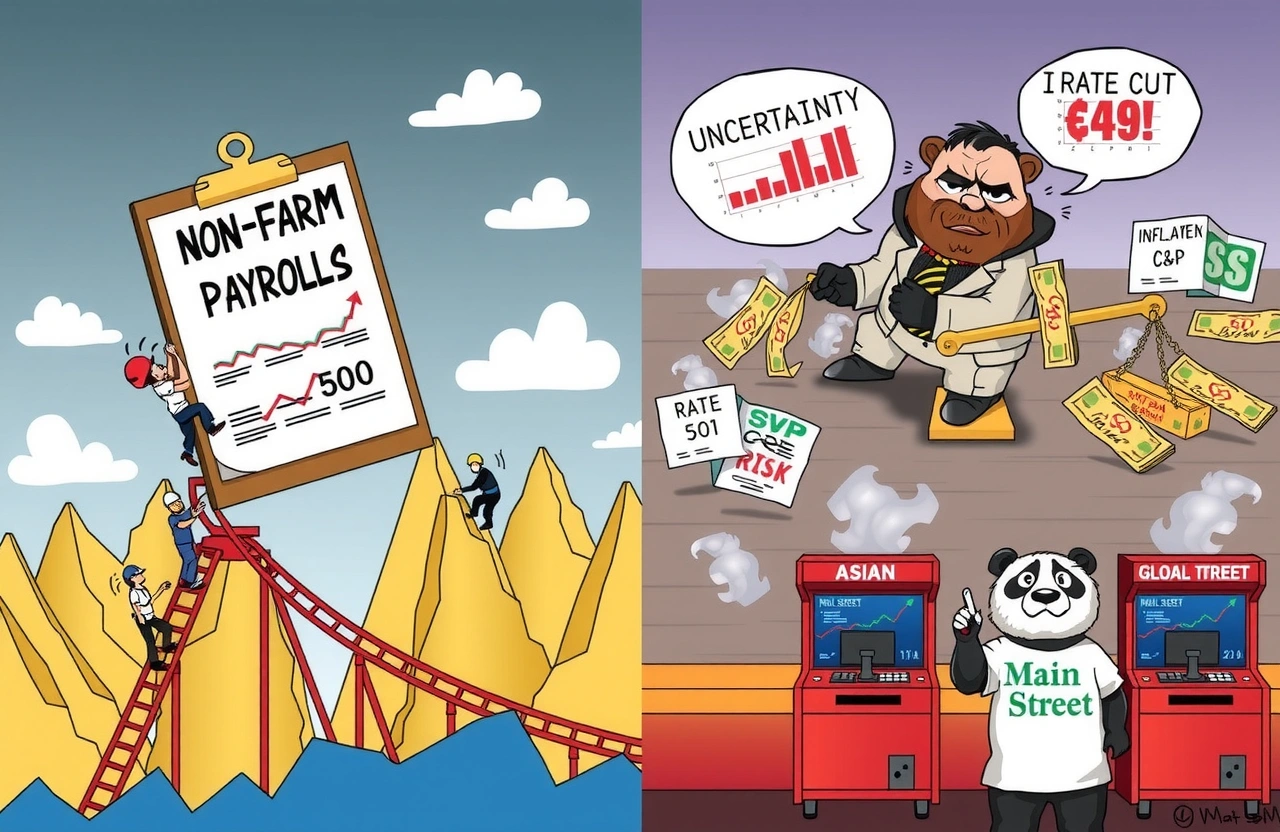– Understanding the synergy between non-farm payrolls and stock market performance\n- Key sectors driving recent U.S. job market growth\n- Inflationary pressures and Federal Reserve policy interplay\n- Expert predictions on labor market sustainability\n- Actionable investment strategies amid economic uncertainty\n\n\nAs the S&P 500 closes at unprecedented heights, economists recalibrate expectations for the U.S. labor market. The upcoming non-farm payrolls report arrives amid tantalizing contradictions: soaring equities against persistent inflation whispers. This pivotal moment demands scrutiny not just of monthly job figures but of the intricate machinery connecting Wall Street’s triumphs to Main Street livelihoods. Through quarterly earnings reports and Fed statements, we detect tremors suggesting conventional correlations may be shifting. \n\n
Deciphering the Non-Farm Payrolls Report
\nThe monthly U.S. non-farm payrolls report represents America’s economic pulse check. Published by the Bureau of Labor Statistics, it measures employment changes excluding farm workers, private households, and non-profits.\n\n
Components That Move Markets
\nThree metrics command trader attention:\n- Total jobs added/lost\n- Unemployment rate percentage\n- Average hourly earnings growth\nFor instance, February’s stunner—353,000 jobs added—spurred immediate S&P 500 gains. Yet last week’s JOLTS report revealing 8.5 million job openings signaled cooling demand that could impact future payroll releases.\n\n
Statistical Nuances Investors Overlook
\nMany underestimate the birth-death model’s role—an estimation of business openings/closures that added 118,000 phantom jobs during 2023’s banking turmoil according to Federal Reserve research. This statistical artifact frequently amplifies perceived economic strength.\n\n
Stock Market Highs: Implications for Labor
\nHistorically, equities and employment maintain symbiotic rhythms. Robust hiring fuels consumer spending lifting corporate profits, yet today’s divergence merits scrutiny. The S&P 500 gained 24% amid slowing job creation post-2021.\n\n
Sector-Specific Employment Engines
\nRecent hiring surges concentrated in:\n- Healthcare: Added 70,000+ jobs monthly through 2023\n- Government: Unfilled positions driving 12% YoY growth\n- Leisure/Hospitality: Below pre-pandemic staffing despite demand\nMeanwhile tech giants like Amazon initiated 27,000 layoffs post-peak, demonstrating sectoral fragmentation.\n\n
Economic Headwinds Confronting Continued Growth
\nPersistent inflation remains the non-farm payrolls’ primary antagonist. With average hourly wages rising 4.5% annually while productivity gained just 1.3%, businesses face margin compression inevitably triggering hiring pauses.\n\n
The Fed Policy Tightrope
\nJerome Powell’s delicate balancing act becomes clear: Cut rates prematurely risk re-igniting inflation; delay cuts excessively risk sparking unemployment. Futures markets currently price 72% probability of rate reductions commencing pre-election. \n\n
Projecting the Payroll Trajectory
\nGoldman Sachs analysts forecast payroll growth moderating to 190,000 monthly by Q4—still historically sturdy. Their model weights:\n- Declining quits rate (currently 2.2% vs 2022’s 3.0% peak)\n- Rising corporate debt issuance costs\n- Manufacturing PMI contraction \n\n
Alternative Scenarios
\nMorgan Stanley cautions about potential turbulence:\n- Geopolitical supply shocks reversing commodity disinflation\n- Commercial real estate defaults impacting regional banks\n- Election uncertainty freezing investment\n\n
Investor Action Playbook
\nPortfolio positioning requires nuanced responses:\n- Monthly payrolls exceeding 300,000: Rotate into cyclical/value stocks\n- Sub-100,000 readings: Increase bond duration & defensive equities\n- Wage growth persistently above 4%: Prioritize inflation hedges (TIPS, commodities)\n\n
Sentiment Indicators as Leading Signals
\nThe Conference Board’s Employment Trends Index reliably foreshadows payroll shifts. Its February dip signaled cooling ahead—confirmed by recent moderation. Investors should consult such indicators before labor data releases.\n\n\nThe dance between equities and employment data grows increasingly intricate. Prudent investors will monitor unemployment claims weekly and diversify exposure—particularly toward global markets less sensitive to U.S. cyclicals. Subscribe to our real-time economic dashboard for timely trade catalysts ahead of the next jobs report.




